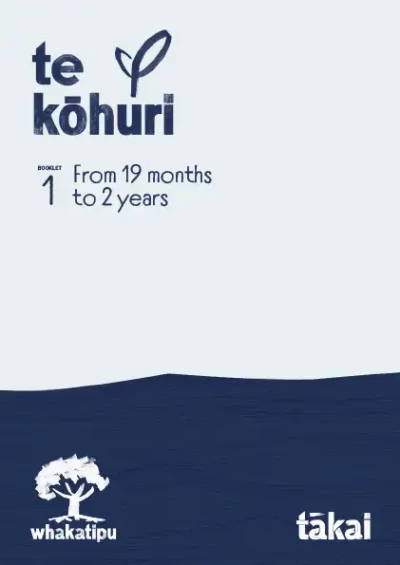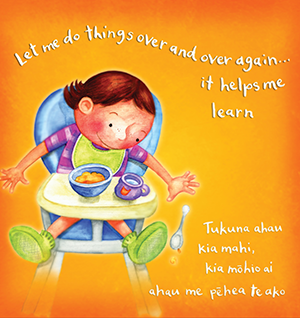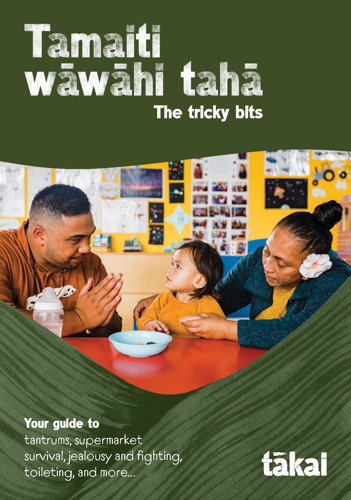
Give me choices
Making choices is an important part of learning, but tamariki need boundaries. Whānau can support this growing independence by offering limited choices.
Being able to make decisions doesn’t happen overnight. Children learn with adults’ guidance. At this age, they’re learning to balance their search for independence with their need to feel safe and secure.
How can whānau support their growing child?
Have a look at ‘Whānau say’ on page 8 of the Whakatipu booklet Te Kōhuri 1. There are a number of tips on this page. The first one is about getting children’s attention.
Sometimes adults accuse children of not listening when in fact they’re just too absorbed in what they’re doing.
Ask the whānau:
- Have you noticed the difference when you get down to the same level as your tamaiti to talk with them? What happens?
- Can you remember a time when you didn’t hear or understand what someone was saying to you? What was that like?
Remind them that how we talk to children is also important. Talk through the booklet.
There are more tips about clear communication on page 22 of Te Kōhuri 1. These include a reminder that our children learn by watching us and hearing us. That’s why adults need to be mindful of what sort of role models they are. Then there’s a good tip about how important consistency is and that whānau members all need to be on the same page.
Choices
Page 23 of Te Kōhuri 1 talks about choices. In this instance, it’s about kai and the wisdom of not offering too many choices.
The ‘Ngā tohu whānau’ section on page 15 talks about how tamaiti will want to make their own choices.
Look at the cartoon on pages 26–27. See if the whānau can work out how to avoid this situation.
The tricky bits
Page 9 of the booklet 'The tricky bits' talks about asking a child to do one thing at a time, not a whole list of things.
There’s another useful list of tips on page 6. One of these is to ‘give limited choices’. Ask the whānau for some examples about how that might work for their tamaiti, for example, when eating, dressing and choosing toys or games or during an outing. Point 9 on page 4 of the booklet gives the same advice.
Helpful resources for whānau
-
Making Decisions - Let your Toddler make some independent decisions<
Making Decisions - Let your Toddler make some independent decisions
 pdf 10 MB
pdf 10 MB













